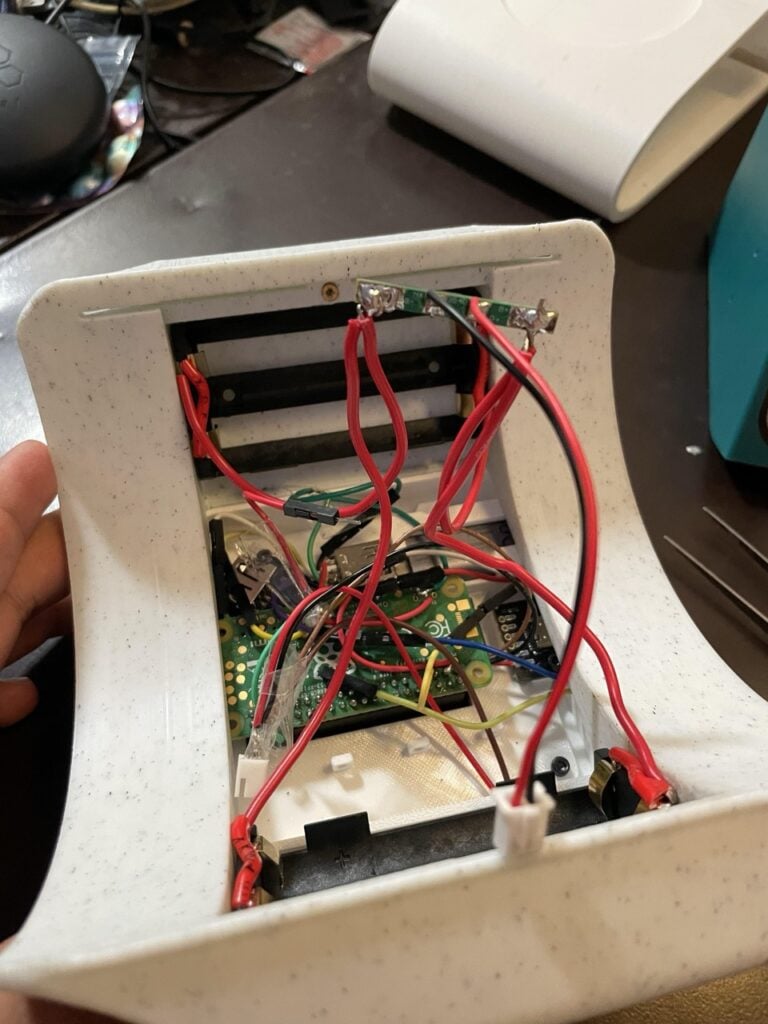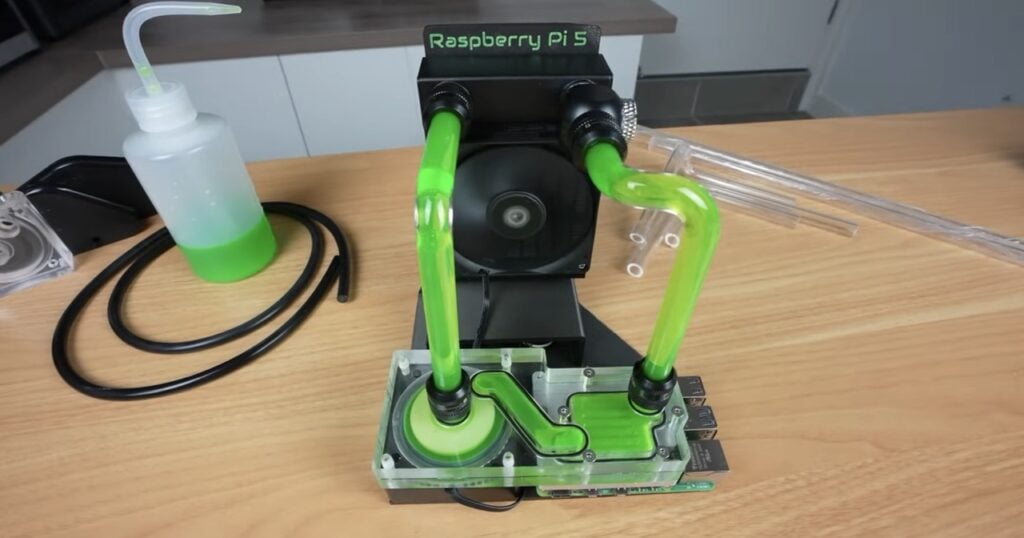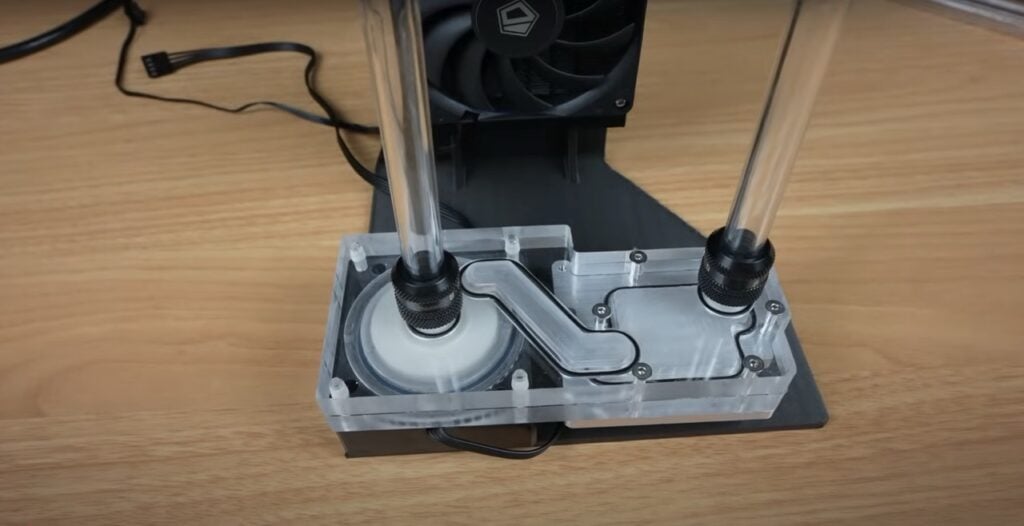The PiPod uses a USB DAC, components that enable the battery to work (including a battery charge module, battery protection circuit, and a battery indicator module), a Waveshare 4-inch DPI Square Capacitive Screen 720 × 720, and a Raspberry Pi Zero 2 W. Oh, and a 3D printer and about 500g of filament.

The 3D-printed case is shaped to fit around the wearer’s arm, like the phones worn by all those people we see out running. What you see here is not the first iteration; the maker has documented a raft of mistakes, iterations, and happy little accidents to get to the finished version.
CNC water cooling
If your Raspberry Pi 5 is running hot and you want to bring the temperature down a bit, you could try closing a couple of browser tabs. Or open the window. Or maybe buy the official Active Cooler from Raspberry Pi, which clips on and comprises a blower and an aluminium heatsink. In the unlikely event that this isn’t enough, maybe you could take a leaf out of Michael Clements’s book and mill a custom aluminium block, with a milled acrylic reservoir to hold bright green cooling fluid, pumped through a radiator and cooled by a fan running on a separate 12V power supply. As Michael says, this approach is “obviously a totally over-the-top project – but that’s what made it fun”.

Michael milled the aluminium out of a pice of 10mm stock on a Carvera Air home CNC machine; this block makes direct contact with the bits of the Raspberry Pi that produce heat: the CPU, the RAM, the USB and Ethernet controllers, and the power circuitry. On top of this there’s the water block, which also houses the pump. The device is mounted on a 3D-printed stand, with the Raspberry Pi 5 attached to the aluminium block via four M2.5 screws, the holes for which Michael tapped himself.

The sheer ridiculousness of this build (that’s Michael’s own word) is what caught our eye; then when we learned what has gone into it, we were blown away by the variety of different skills he had to use. You’d never know it, but this is the first time he’s had to bend hard-line pipes. It’s incredibly clean, and it works too – so hats off!

Schreibe einen Kommentar
Du musst angemeldet sein, um einen Kommentar abzugeben.